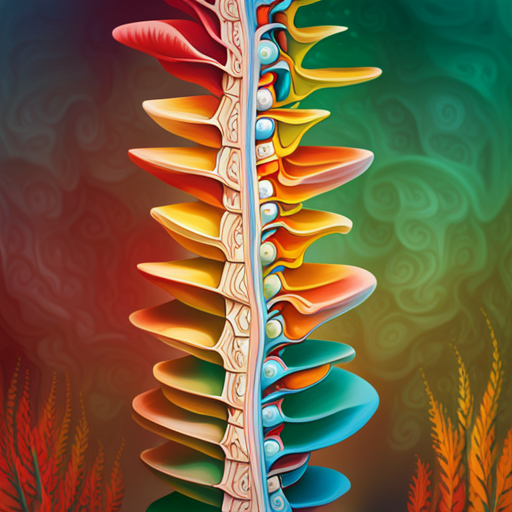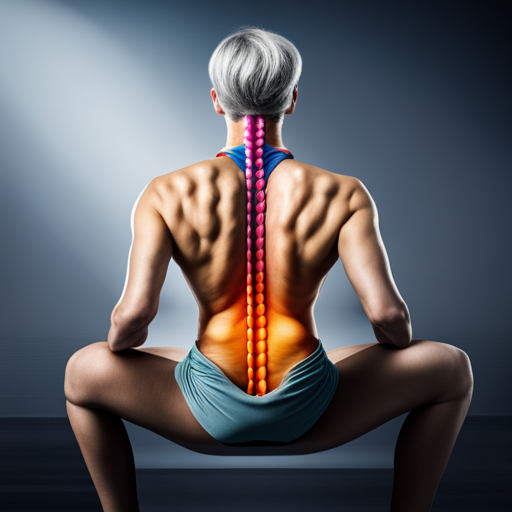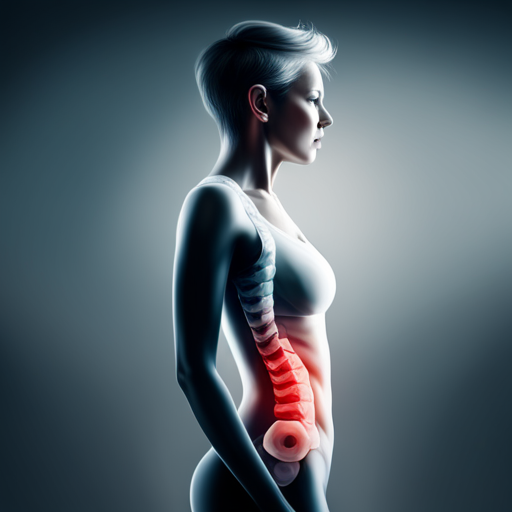Yo, dudes and dudettes! Are you ready to dive into the gnarly world of spinal terminology? Well, get stoked because we’ve got a sick glossary just for beginners like you. It’s time to decode those fancy words and understand what’s going on with your backbone.
Picture this, you’re at the doctor’s office and they start throwing around words like ‘vertebrae’ and ‘spinal cord.’ It’s like they’re speaking a whole different language, right? Well, fear not, because we’re here to break it down for you.
First things first, let’s talk about vertebrae. These bad boys are the individual bones that make up your spine. Think of them as the building blocks of your back.
Then we’ve got the discs, which are like cushy pillows between each vertebra. They give your spine flexibility and absorb all those gnarly shocks.
But wait, there’s more! The spinal cord is like the superhighway of nerves that runs through your spine. It’s the messenger between your brain and the rest of your bod.
And let’s not forget about scoliosis, a condition that messes with the curve of your spine. It can be a real bummer, but we’ve got your back.
Last but not least, we’ve got herniated discs. These suckers happen when the squishy center of a disc pops out and causes major pain. Not cool, bro.
So, strap in and get ready to learn some epic spinal terminology. We’ve got your back, dude!
Key Takeaways
- Vertebrae are the individual bones that make up the spine and act as building blocks.
- Discs are cushion-like structures between each vertebra that provide flexibility and absorb shock.
- The spinal cord is a bundle of nerves that runs through the spine and transmits messages between the brain and the body.
– Scoliosis is a condition characterized by abnormal curvature of the spine and can be treated with wearing a brace or undergoing surgery.
Vertebrae: The individual bones that make up the spinal column.

The vertebrae, those awesome building blocks of our spine, are the bones that make up the spinal column. They’re like puzzle pieces that fit together to create the strong foundation of our body’s support system.
Understanding the vertebral anatomy is key to understanding how the spinal column is structured. Each vertebra has a round body in the front and a bony arch in the back, which protects the spinal cord. There are also little bony projections that stick out on each side. These structures help to hold everything together and provide stability.
But wait, there’s more! Let’s not forget about the discs, those cool cushions between each vertebra that give us flexibility and absorb shock. They’re like little springs that help us move and bounce back.
See, it’s all connected!
Discs: The cushions between each vertebra that provide flexibility and shock absorption.

Imagine feeling the flexibility and shock absorption in your spine as the discs, those cushions between each vertebra, work their magic.
There are two types of spinal discs: the first is called the ‘nucleus pulposus,’ which is the soft, jelly-like center, and the second is the ‘annulus fibrosus,’ which is the tough, outer layer that holds everything together.
These discs are important because they allow your spine to move smoothly and absorb shock when you jump, run, or just move around. But sometimes, these discs can degenerate, meaning they can wear down or become damaged.
Common causes of disc degeneration include aging, injury, and poor posture. When the discs degenerate, they can cause pain and stiffness in your back.
Now, let’s talk about the spinal cord, the bundle of nerves that runs through the spinal column and transmits messages between the brain and the rest of the body.
Spinal Cord: The bundle of nerves that runs through the spinal column and transmits messages between the brain and the rest of the body.

Get ready to explore the spinal cord, a powerful bundle of nerves that acts as the communication highway between your brain and the rest of your body. It’s like a super important phone line that sends messages back and forth, telling your body what to do.
The spinal cord is really delicate, so it’s important to protect it. Spinal injuries can happen if you hurt your back or neck. These injuries can be really serious and sometimes cause problems with moving or feeling in different parts of your body. But don’t worry, the spinal cord also does some really cool things. It helps you walk, run, jump, and even feel things like tickles and hugs.
Now let’s talk about scoliosis, which is when your spine gets a little wonky.
Scoliosis: A condition characterized by an abnormal curvature of the spine.

If you have scoliosis, your spine might be all twisted and bent in a weird way. It’s not normal and it can make you feel uncomfortable. Sometimes, it can even mess up your posture and make you look kind of crooked. But don’t worry, there are ways to deal with it!
When it comes to treatment options for scoliosis, you’ve got a few choices. You can wear a brace, which is like a special jacket that helps straighten out your spine. Or, if your curve is really bad, you might need surgery to fix it.
Having scoliosis can impact your daily life. It can make it harder to do things like play sports or carry heavy stuff. And sometimes, it can even make you feel self-conscious about how you look.
Next up, let’s talk about herniated discs. They’re when the soft stuff inside a disc in your back pokes out and causes pain. It’s not fun, but we’ll get through it together!
Herniated Disc: When the soft center of a disc pushes through the outer layer, causing pain and discomfort

Herniated discs can be a real pain in the back, literally. It’s like when the squishy part of a disc in your spine squishes out and causes a lot of hurt and discomfort. Ouch!
If you have a herniated disc, you might feel pain shooting down your leg or have numbness and tingling. It’s not fun at all. But don’t worry, there are treatments to help you feel better.
Sometimes, the doctor will recommend rest and physical therapy to make your back stronger. Other times, they might suggest medications or injections to help with the pain. In really severe cases, surgery might be needed.
So if your back is giving you trouble, make sure to talk to a doctor who can help you with your herniated disc.
Frequently Asked Questions
What are some common causes of scoliosis?
Scoliosis happens when your spine goes crazy and looks like a twisted pretzel. It can be caused by things like genetics, muscle imbalances, or even being a teenager. Sometimes, you can treat it without surgery.
How is a herniated disc diagnosed?
To find out if you have a herniated disc, the doctor will do a physical exam and use imaging techniques like an MRI or CT scan. They will look at your back to see what’s going on.
Can scoliosis be treated without surgery?
No, scoliosis can be treated without surgery! There are non surgical treatment options and alternative therapies available. These can help straighten your spine and relieve pain. You don’t have to go under the knife!
What are the symptoms of a herniated disc?
Herniated discs happen when the soft jelly inside your back gets pushed out. It can happen from lifting heavy things or just getting older. You can treat it with rest, medicine, or sometimes surgery.
How does the spinal cord control movement in the body?
The spinal cord is like a boss that tells your body how to move. If it gets hurt, there are treatments to help fix it. Spinal cord function is important for moving our bodies.
Conclusion
So there you have it, buddy! You’ve just learned all about the spine and its fancy terms.
Now, let’s dig a little deeper and investigate the truth behind these things. Some folks say that scoliosis can be caused by carrying heavy backpacks, but is that true? Well, scientists aren’t totally sure yet, but they’re still studying it.
It’s cool to think that there’s more to learn about our amazing bodies, isn’t it? Keep exploring, my friend!
